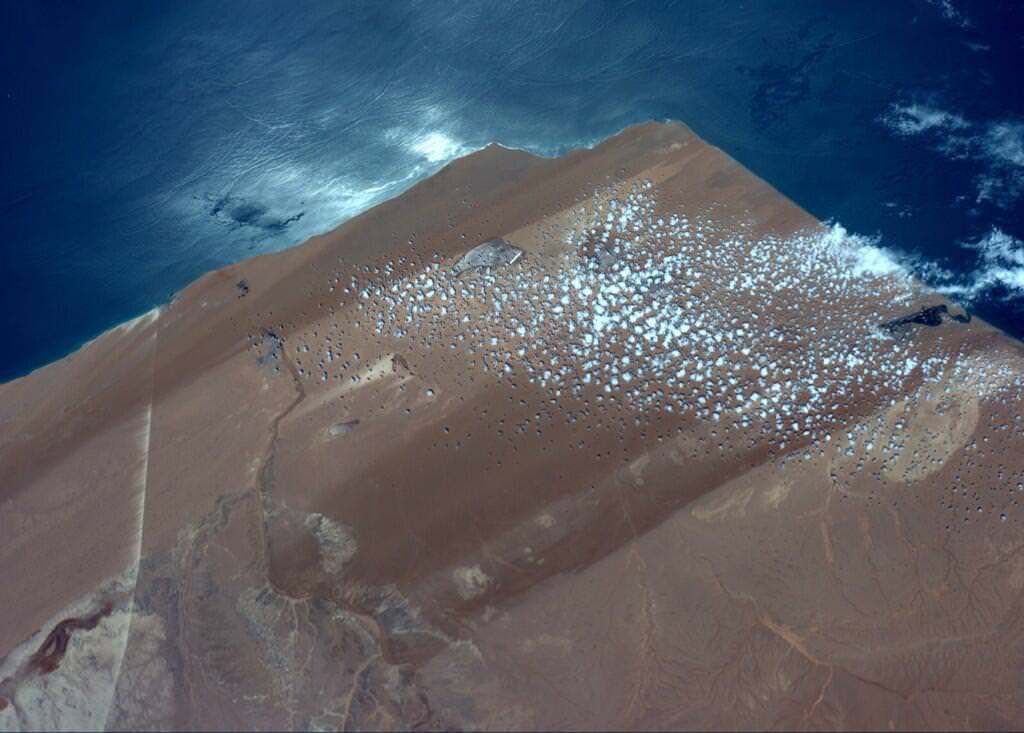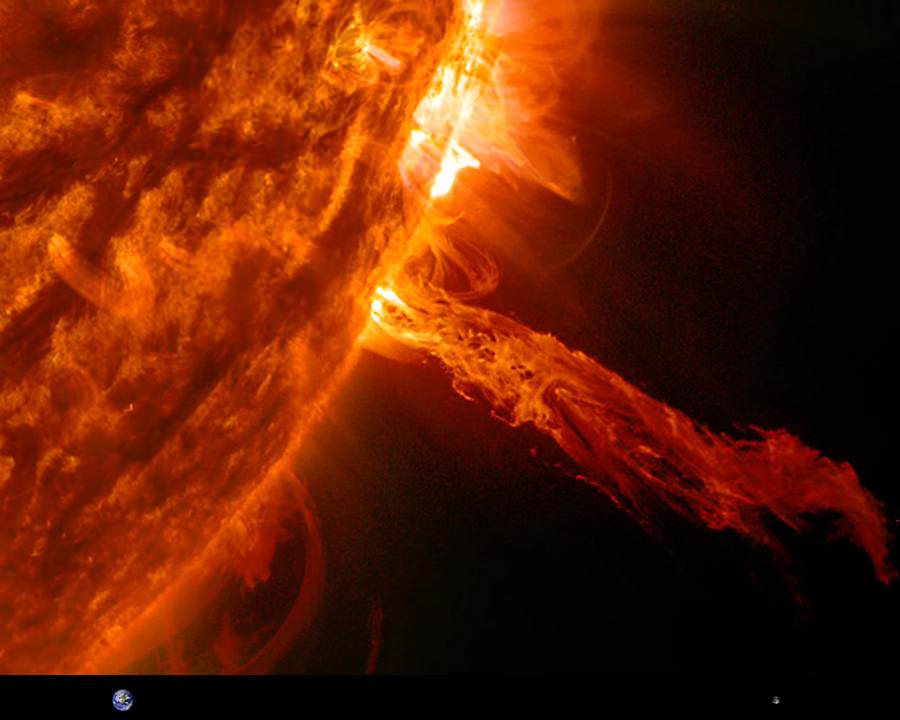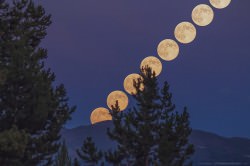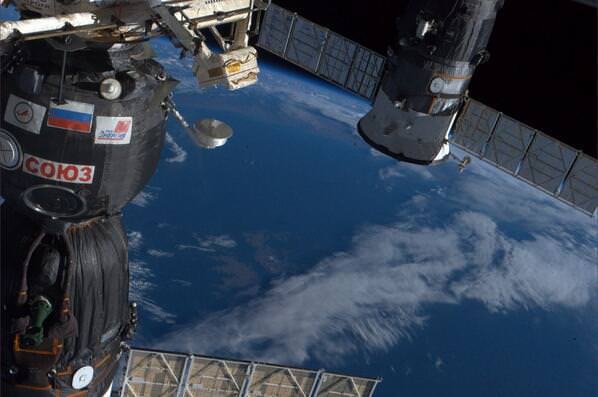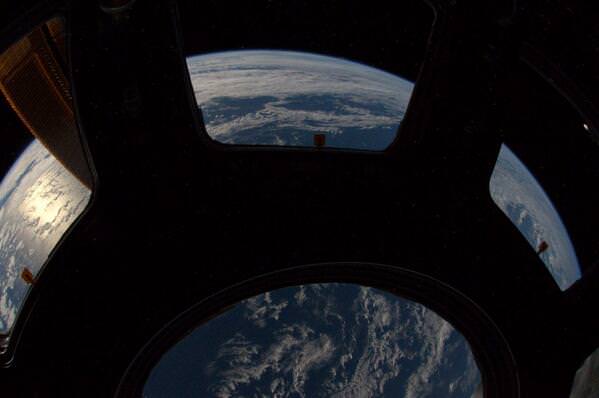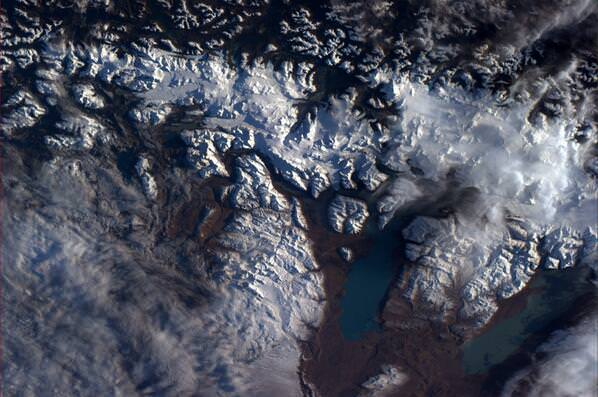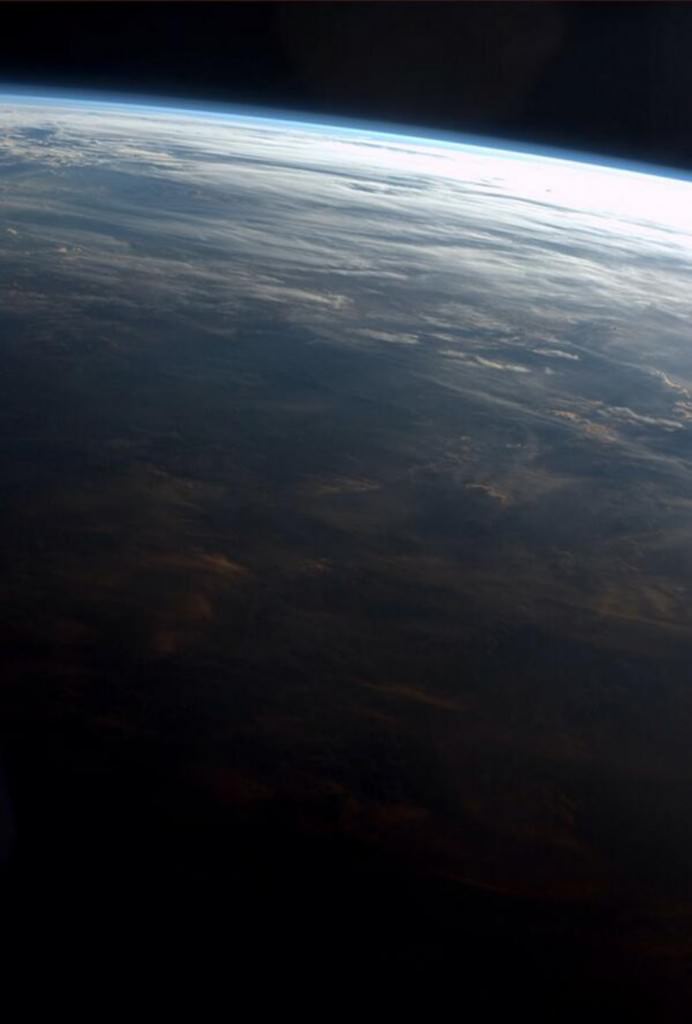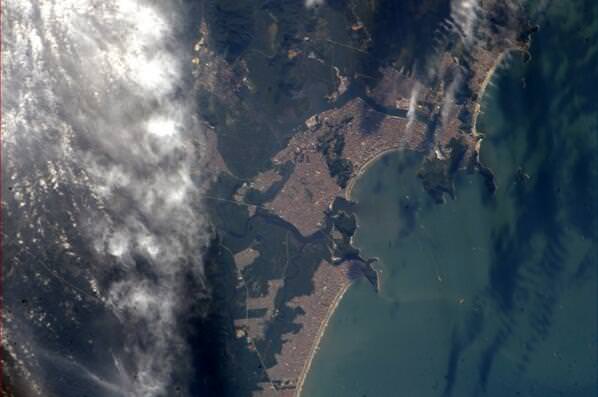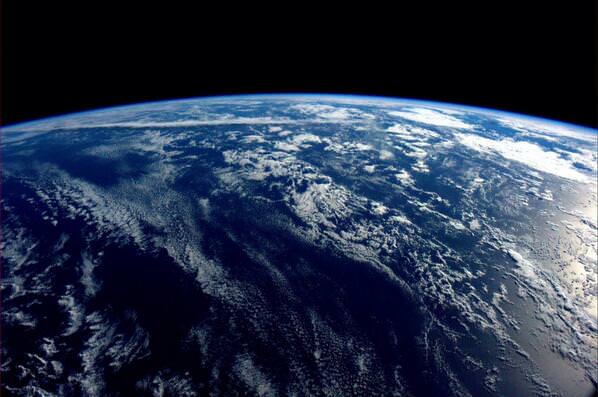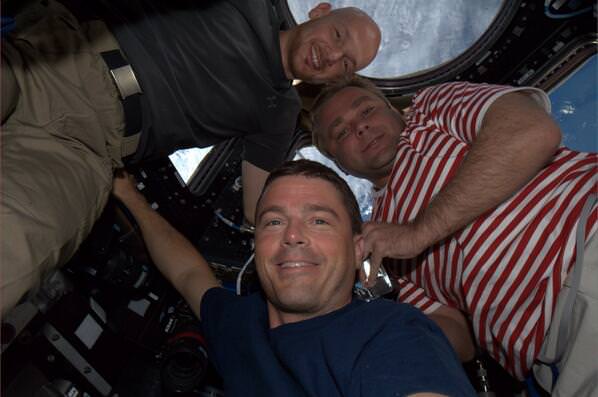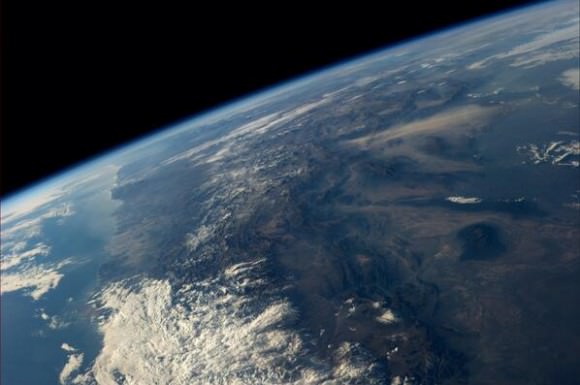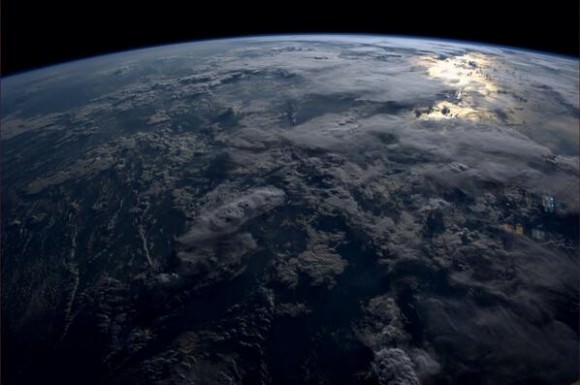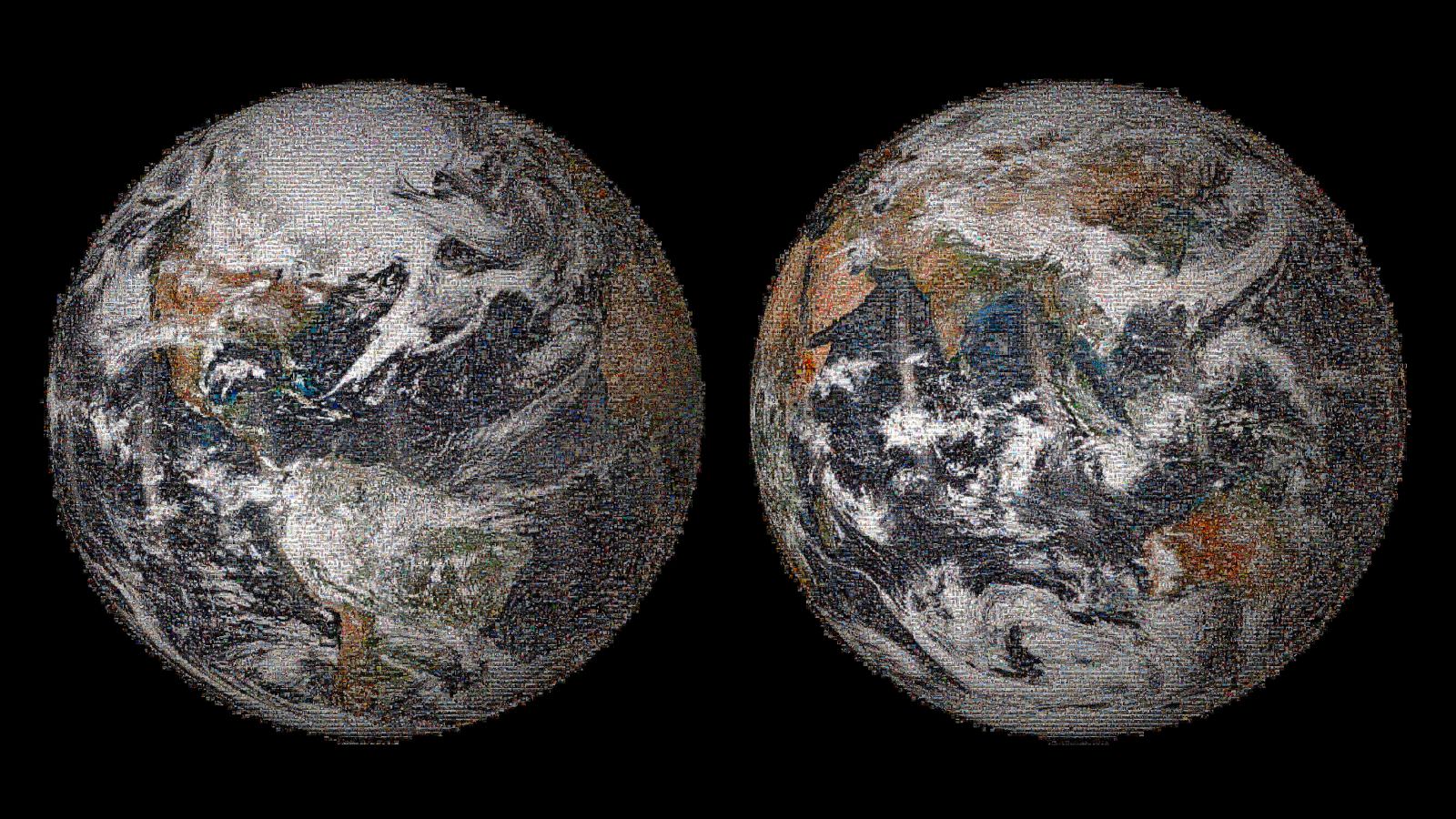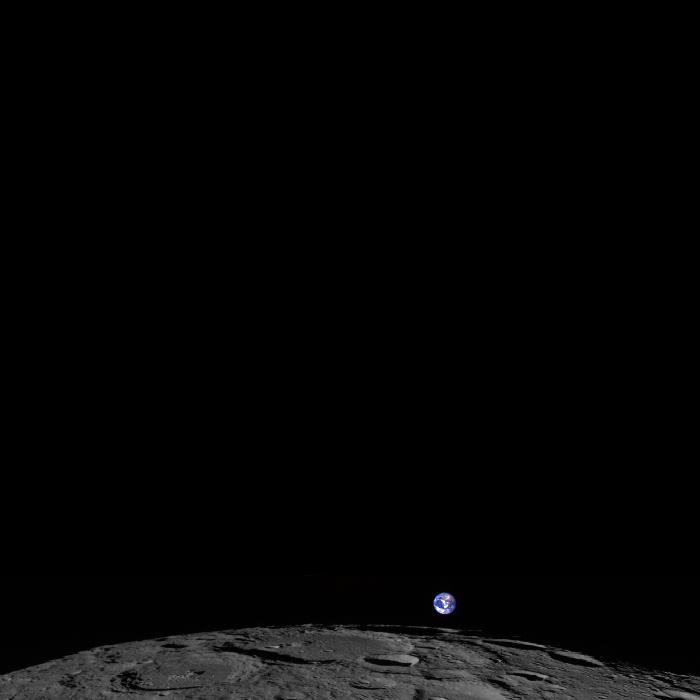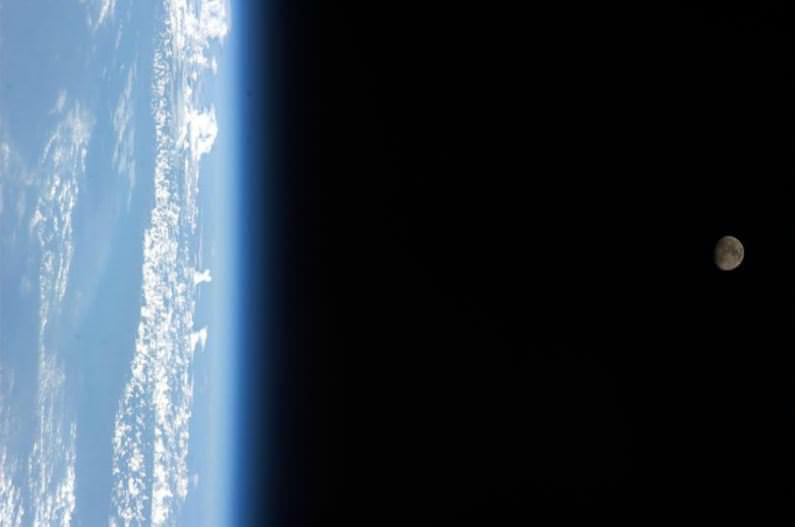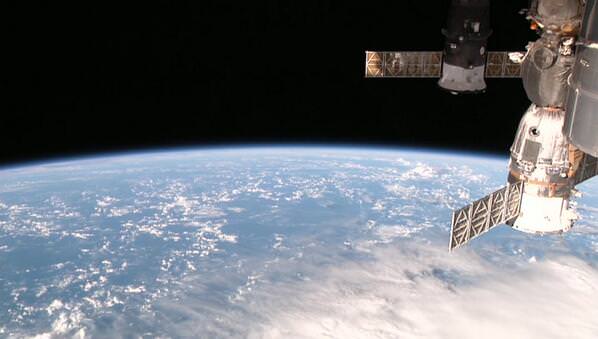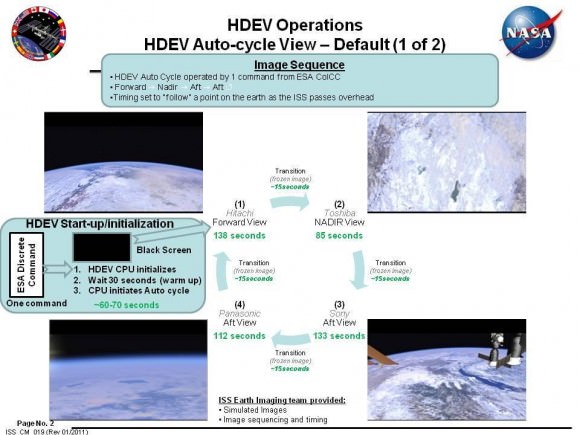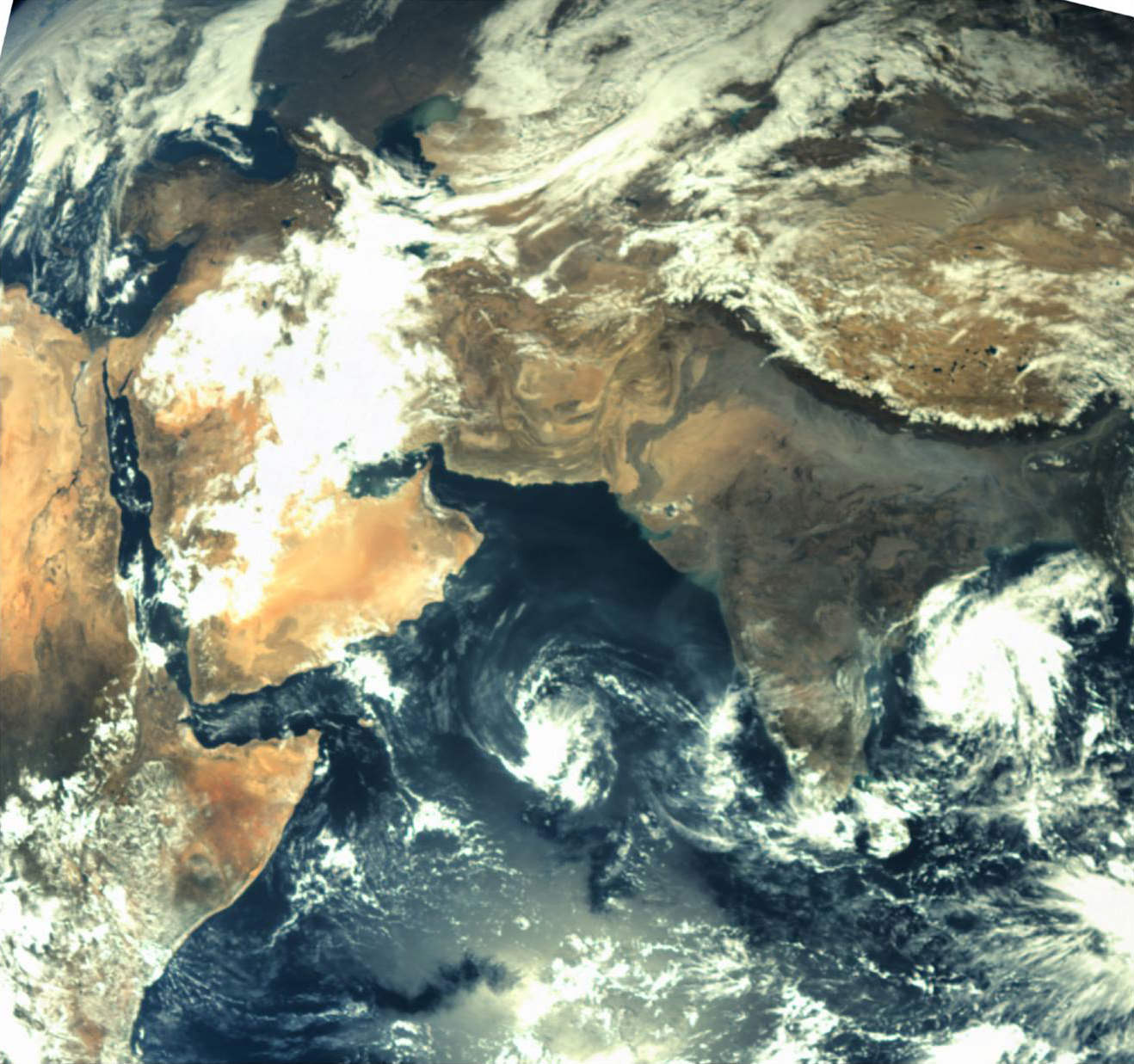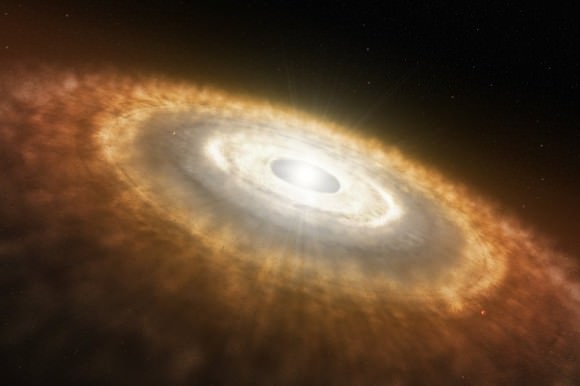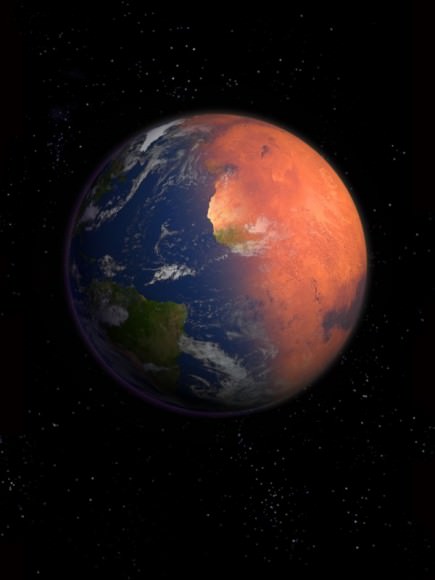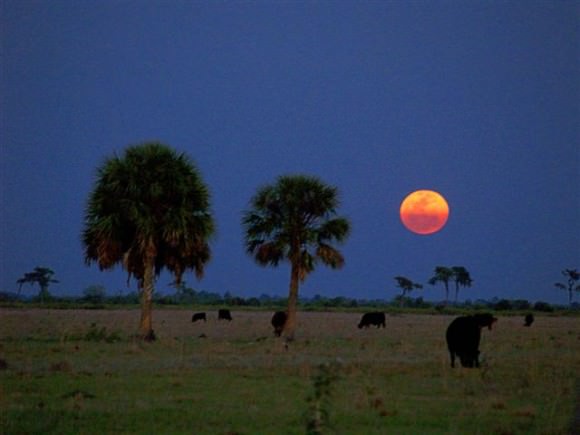Have you ever noticed that everything in space is a sphere? The Sun, the Earth, the Moon and the other planets and their moons… all spheres. Except for the stuff which isn’t spheres. What’s going on?
Have you noticed that a good portion of things in space are shaped like a sphere? Stars, planets, and moons are all spherical.
Why? It all comes down to gravity. All the atoms in an object pull towards a common center of gravity, and they’re resisted outwards by whatever force is holding them apart. The final result could be a sphere… but not always, as we’re about to learn.
Consider a glass of water. If you could see the individual molecules jostling around, you’d see them trying to fit in as snugly as they can, tension making the top of the water smooth and even.
Imagine a planet made entirely of water. If there were no winds, it would be perfectly smooth. The water molecules on the north pole are pulling towards the molecules on the south pole. The ones on the left are pulling towards the right. With all points pulling towards the center of the mass you would get a perfect sphere.
Gravity and surface tension pull it in, and molecular forces are pushing it outward. If you could hold this massive water droplet in an environment where it would remain undisturbed, eventually the water would reach a perfect balance. This is known as “hydrostatic equilibrium”.
Stars, planets and moons can be made of gas, ice or rock. Get enough mass in one area, and it’s going to pull all that stuff into a roughly spherical shape. Less massive objects, such as asteroids, comets, and smaller moons have less gravity, so they may not pull into perfect spheres.

As you know, most of the celestial bodies we’ve mentioned rotate on an axis, and guess what, those ones aren’t actually spheres either. The rapid rotation flattens out the middle, and makes them wider across the equator than from pole to pole. Earth is perfect example of this, and we call its shape an oblate spheroid.
Jupiter is even more flattened because it spins more rapidly. A day on Jupiter is a short 9.9 hours long. Which leaves it a distorted imperfect sphere at 71,500 km across the equator and just 66,900 from pole to pole.
Stars are similar. Our Sun rotates slowly, so it’s almost a perfect sphere, but there are stars out there that spin very, very quickly. VFTS 102, a giant star in the Tarantula nebula is spinning 100 times faster than the Sun. Any faster and it would tear itself apart from centripetal forces.
This oblate spheroid shape helps indicate why there are lots of flattened disks out there. This rapid spinning, where centripetal forces overcome gravitational attraction that creates this shape. You can see it in black hole accretion disks, solar systems, and galaxies.
Objects tend to form into spheres. If they’re massive enough, they’ll overcome the forces preventing it. But… if they’re spinning rapidly enough, they’ll flatten out all the way into disks.


